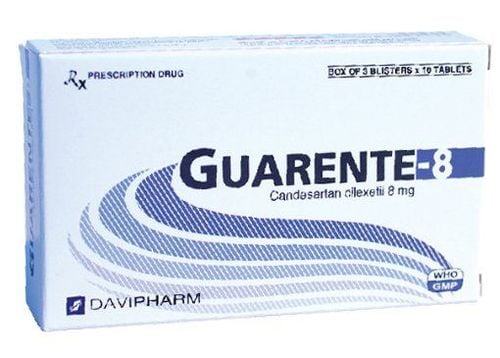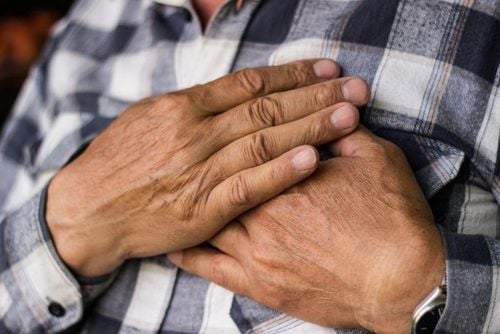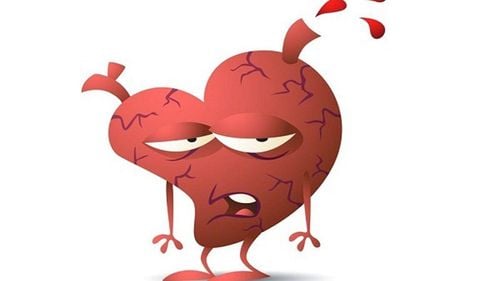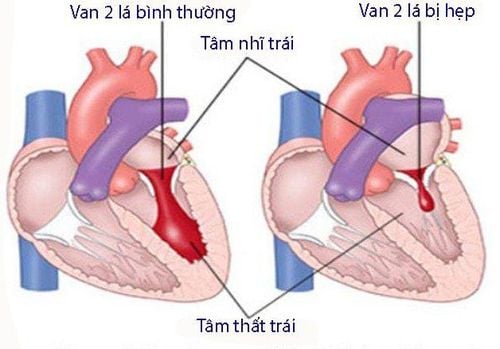This is an automatically translated article.
The article was professionally consulted by Specialist Doctor II Nguyen Quoc Viet - Department of Medical Examination & Internal Medicine - Vinmec Danang International General Hospital. The doctor has more than 20 years of experience in the examination and treatment of cardiovascular diseases and Cardiovascular Interventions (Including angiography, dilation, stenting of coronary arteries, renal arteries...), placing temporary pacemakers , forever...1. Post-rheumatic valve disease
Posterior rheumatic heart disease is caused by the body's immune system: pharyngitis caused by group A beta-hemolytic streptococci is the initial state. At this time, the patient's body will respond by creating antibodies to fight the bacteria. However, because the structure of the heart muscle and heart valve in the human body is similar to that of bacterial cells, it is mistakenly attacked by antibodies. The consequences cause damage to the heart valves, causing the leaflets to thicken and stick together combined with calcium deposition to harden the valve leaves, leading to open and narrow heart valves.2. Symptoms of rheumatic heart valve disease
The initial symptom of post-rheumatic heart valve disease is often shortness of breath during exertion or heavy work. If not detected early and treated promptly, the disease will worsen, and the degree of shortness of breath will gradually increase. rested.In addition, the narrowing and regurgitation of the heart valve also causes a cough with a little blood. These signs often make it easy for patients and doctors to confuse them with other respiratory diseases. Therefore, most patients discover heart problems when the disease progresses to an advanced stage and leads to many serious consequences.

3. Treatment of post-rheumatic heart valve disease
Treatment of rheumatic heart valve disease is difficult to completely cure the stenosis and regurgitation caused by rheumatic heart disease. Although the patient has had surgery to replace the heart valve, then it is still necessary to use medication to prevent thrombosis and the risk of complications that may be encountered. Therefore, the main goals in the treatment of post-rheumatic heart disease are to improve symptoms, prevent disease progression, and prevent heart failure.3.1 Medical treatment with drugs Depending on the degree of stenosis, regurgitation and symptoms of each patient, the doctor will have a method of combining appropriate drugs. Some commonly used drug classes include:
Diuretics: Removes excess fluid from the body, relieves symptoms of cough, edema, shortness of breath Antiarrhythmic drugs: helps control heart rate, reduces nervousness and palpitations. ACE inhibitors: relax blood vessels, lower blood pressure, reduce the pressure of blood on heart valves. Beta-blockers: treat high blood pressure and help the heart beat slower and softer. Anticoagulants: Helps prevent blood clots from forming on the heart valves, which can tear the valve, and travel into the blood vessel causing an embolism. 3.2 Surgical intervention of heart valve surgery If the heart valve is only narrow, the patient can be performed surgery to dilate the heart valve. Currently, there is a method of valve dilation by percutaneous vascular intervention with low cost and higher safety than the traditional open surgery method.
Performing percutaneous valvular dilation, the doctor will use a catheter threaded in the blood vessel from the femoral vein in the groin to the heart valve. The catheter tip has a balloon, when inflated, the balloon will widen the valve hole. With this method, patients do not need surgery, and shorten the hospital stay.
However, if the heart valve is severely damaged or both narrow and open, it is necessary to have surgery to repair or replace the heart valve.
In case the valve leaflet is thickened, calcified, and the leaflet ligament is severely contracted, an artificial valve must be replaced. If the valve leaflets are still soft, and the ligaments are not severely damaged, the valve should be repaired.
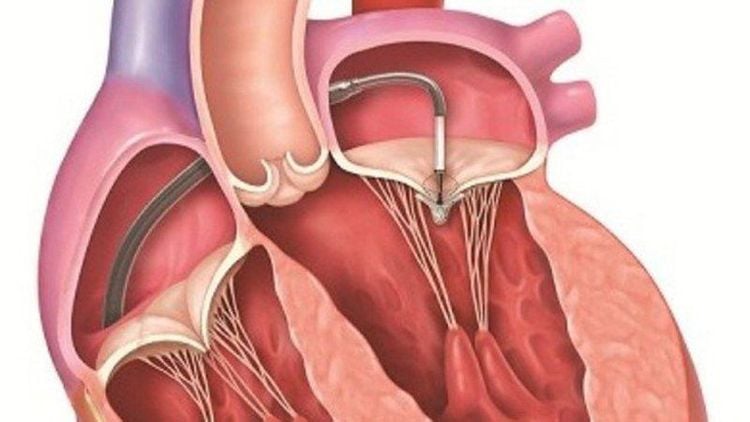
Increase the intake of green vegetables, whole grains, fresh fruits, white meats such as chicken, fresh fish, ... Limit foods containing a lot of fat such as fatty meat. , fried food, fast food,... Eat light, reduce saltiness Regularly practice exercise and sports every day with moderate activities, and suitable for health conditions such as: cycling car, walking, swimming, and practicing yoga,... In short, rheumatic heart valve disease is a disease caused by the body's immune system, with the first symptoms being cough and shortness of breath when exertion. Treatment can be medical or surgical depending on the condition of the disease. If the rheumatic heart valve is not treated, it can lead to heart failure, seriously affecting the patient's health. Therefore, when seeing signs and symptoms of the disease, it is necessary to immediately go to a medical facility for examination and timely intervention.
To protect cardiovascular health in general and detect early signs of myocardial infarction and stroke, customers can sign up for Cardiovascular Screening Package - Basic Cardiovascular Examination of Vinmec International General Hospital . The examination package helps to detect cardiovascular problems at the earliest through tests and modern imaging methods. The package is for all ages, genders and is especially essential for people with risk factors for cardiovascular disease.
Please dial HOTLINE for more information or register for an appointment HERE. Download MyVinmec app to make appointments faster and to manage your bookings easily.





